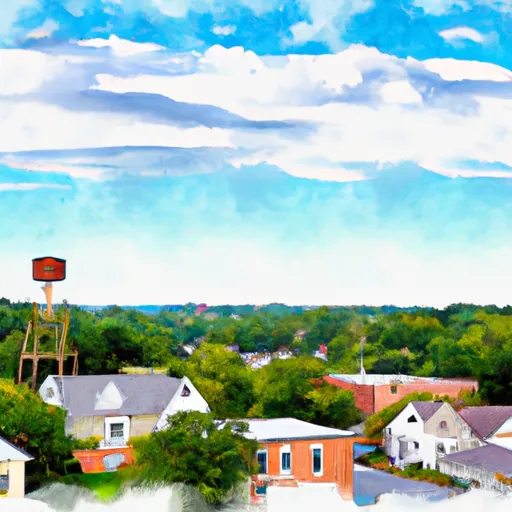-
 Snoflo Premium
Snoflo Premium
Get unlimited access to all our content
With no Ad interruptions! - Start Your Free Trial Login with existing account
Huntingtown
Eden Index
Climate
8.2
•
Recreation
4.2
•
Community
5.3
•
Safeguard
6.1/10

Huntingtown is a small town located in Calvert County, Maryland. It experiences a humid subtropical climate with hot, humid summers and mild winters. Average temperatures range from the mid-80s Fahrenheit in summer to the mid-30s in winter. The region receives about 45 inches of rainfall annually, evenly distributed throughout the year.
Huntingtown is surrounded by water bodies, including the Patuxent River and Chesapeake Bay, which offer various hydrology constituents. These waterways provide opportunities for fishing, boating, and other water-based activities. The area is also known for its wetlands and marshes, which support diverse wildlife, including migratory birds and aquatic species.
Outdoor recreation enthusiasts can enjoy several activities in Huntingtown. Breezy Point Beach and Campground is a popular spot for swimming, picnicking, and camping. Hikers and nature lovers can explore the nearby Jefferson Patterson Park and Museum, which features scenic trails, archaeological sites, and educational exhibits. Huntingtown is also home to several parks and sports fields, offering opportunities for sports and recreational activities.
Overall, Huntingtown, Maryland provides a pleasant climate, abundant water resources, and diverse outdoor recreation options, making it an appealing destination for nature lovers and outdoor enthusiasts.
What is the Eden Index?
The Snoflo Eden Index serves as a comprehensive rating system for regions, evaluating their desirability through a holistic assessment of climate health, outdoor recreation opportunities, and natural disaster risk, acknowledging the profound impact of these factors on livability and well-being.
Climate Health Indicator (CHI): 8.2
Huntingtown receives approximately
1155mm of rain per year,
with humidity levels near 80%
and air temperatures averaging around
14°C.
Huntingtown has a plant hardyness factor of
7, meaning
plants and agriculture in this region tend to thrive during the non-winter months.
By considering the ideal temperature range, reliable water supplies, clean air, and stable seasonal rain or snowpacks, the Climate Health Indicator (CHI) underscores the significance of a healthy climate as the foundation for quality living.
A healthy climate is paramount for ensuring a high quality of life and livability in a region, fostering both physical well-being and environmental harmony. This can be characterized by ideal temperatures, reliable access to water supplies, clean air, and consistent seasonal rain or snowpacks.
Weather Forecast
Streamflow Conditions
Upper Chesapeake
Area Rivers
Upper Chesapeake
Snowpack Depths
Upper Chesapeake
Reservoir Storage Capacity
Upper Chesapeake
Groundwater Levels
Recreational Opportunity Index (ROI): 4.2
The Recreational Opportunity Index (ROI) recognizes the value of outdoor recreational options, such as parks, hiking trails, camping sites, and fishing spots, while acknowledging that climate plays a pivotal role in ensuring the comfort and consistency of these experiences.
Access to outdoor recreational opportunities, encompassing activities such as parks, hiking, camping, and fishing, is crucial for overall well-being, and the climate plays a pivotal role in enabling and enhancing these experiences, ensuring that individuals can engage in nature-based activities comfortably and consistently.
Camping Areas
| Campground | Campsites | Reservations | Toilets | Showers | Elevation |
|---|---|---|---|---|---|
| Cedarville State Forest | 27 | 198 ft | |||
| Belle Isle State Park | None | 12 ft |
Nearby Ski Areas
Catastrophe Safeguard Index (CSI):
The Catastrophe Safeguard Index (CSI) recognizes that natural disaster risk, encompassing floods, fires, hurricanes, and tornadoes, can drastically affect safety and the overall appeal of an area.
The level of natural disaster risk in a region significantly affects safety and the overall livability, with climate change amplifying these risks by potentially increasing the frequency and intensity of events like floods, fires, hurricanes, and tornadoes, thereby posing substantial challenges to community resilience and well-being.
Community Resilience Indicator (CRI): 5.3
The Community Resilience Indicator (CRI) recognizes that education, healthcare, and socioeconomics are crucial to the well-being of a region. The CRI acknowledges the profound impact of these elements on residents' overall quality of life. By evaluating educational resources, healthcare accessibility, and economic inclusivity, the index captures the essential aspects that contribute to a thriving community, fostering resident satisfaction, equity, and social cohesion.

